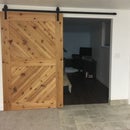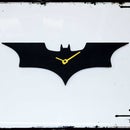Introduction: Reclaimed Planter Box
Introduction:
I made an instructable and my friend said she liked it. The No Plan Planter Box was born and my friends first woodworking project.
Materials:
- ~35 cedar slats
- outdoor glue
- nails of various sizes
- 3 - 2x4s (we used treated)
- screws
Tools:
- table saw
- miter saw
- skil saw w/ straight edge
- drill
- nail gun
- measuring tape
These are the tools we used for the project because we have access to them. It does not mean you couldn't make a beautiful planter box with fewer or different tools.
Because this planter box was made without a plan. I don't have one to share. The overall dimensions are ~69"x20"x24". If anyone would like a plan drawn up to help them create a box I'm more than happy to do it upon request.
Attention!
Please read, understand, and follow instruction manuals for all power tools. Wear your safety glasses. Also remember to look out for loose fitting clothing and long hair.
Step 1: Plane and Joint
Depending on the look of your planter you may skip this step.
We wanted something similar but slightly more rustic than the barn door. Jointing the slats and glueing probably add durability. I thought it would reduce dirt falling out of the planter as well but with landscaping fabric I'm not sure it would make a difference.
Step 2: Glue & Sand Panels
You'll need 2 end pieces and 2 long pieces.
Apply a generous amount of glue and clamp together. Feel along to joints to and make sure that the slats are flush with one another.
If you want a rustic old fence look skip the sanding step. We just aggressively sanded with 80 grit paper until all the imperfections and glue marks were removed.
Step 3: Cut Panels Height
Make all the panels a uniform height by ripping on the table saw.
Step 4: Cut Panel Length
Using a straight edge and a skil saw to cut out the panels to length.
The ends should be the same size and the front and back panels should be the same size.
Step 5: Make a Box
To add some strength to the weak butt joint cut 8 slats to the height of your box. They will be covered in dirt so these don't need to be pretty.
Glue and nail the slats to the back of the panels 1 slat distance from the edge. Shown in the second photo.
Secure some 2x4 at the bottom with some screws.
Depending on how depth of the soil place more 2x4 support. She wanted a soil depth of 13". I glued and nailed the support brackets at 14.5" inches from the top. Screw in the the 2x4s from the outside.
Step 6: Add Trim
Butt joints are typically ugly. Add some nice mitered trim for a more finished look.
The bottom trim and top cap pieces were ripped to a uniform height (The bottom is wider than the top trim) with the table saw then cut at 45 degrees with the miter saw.
Cut the edge cap pieces at 45 degrees on the table saw then cut to height with the miter saw.
Apply some glue and secure with some nails.
Step 7: Apply Finish
That photo was taken with one coat of the natural clear danish oil. The final box has two coats on.
There are many options to finish cedar such as: sealers, oils, stains, painting, or doing nothing and leaving the wood that natural gray. Because this planter is covered we went with danish oil. If it was exposed to the weather more I may have decided to use something else.





